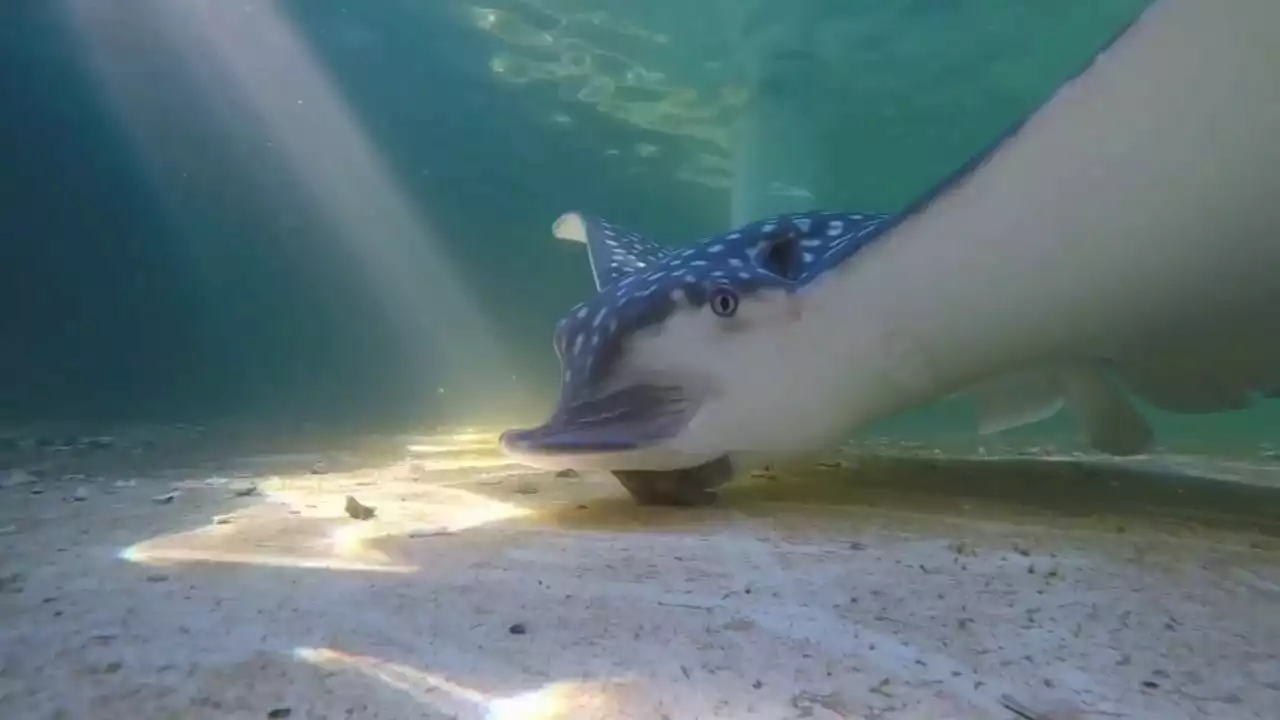The ‘shell-crushing’ footage gives marine biologists a new way to study underwater behavior.
Absurd as it sounds, this video of a stingray snacking on shellfish may be the most soothing scene that’s floated across our screens this year.an ASMR thrill
. Shark and ray researchers from Florida Atlantic University used a battery-powered camera with a hydrophone to eavesdrop on captive spotted eagle rays. Their goal was to see if they could infer how the flat-toothed predators crushed their prey without disturbing their dinner time. By measuring the frequencies of the pops, cracks, and crunches in the clips, the team correctly guessed the rays’ meal, which included a menu of hard clams, banded tulip snails, and six other mollusk species, in more than 400 feeding events. They also gauged the intensity of shell fractures from the sounds to determine their unique method of munching, says Catherine Lamboy, an author on the study, which came out in theearlier this month.
Florida Atlantic University researchers temporarily captured four spotted eagle rays off the Atlantic coast.The biggest takeaway from the research, however, was less about the hungry sea creatures and more about the underwater recorders. As Lamboy and her colleagues wrote in their paper, the success of their experiment shows that acoustic monitoring could play a hefty role in solving looming marine mysteries, like that of.
But as Lamboy points out, recording wildlife in the wide open ocean won’t be as seamless as doing it in a sand-bottomed tank. Conditions at sea are never constant: The slightest tweaks in pressure, temperature, and salinity can change how sound travels through the water. There’s also the issue of the cost of pricey equipment like theWas megalodon a real-life monster or a myth?Still, the benefits of a hands-off approach seems to outweigh the technological trickiness.
